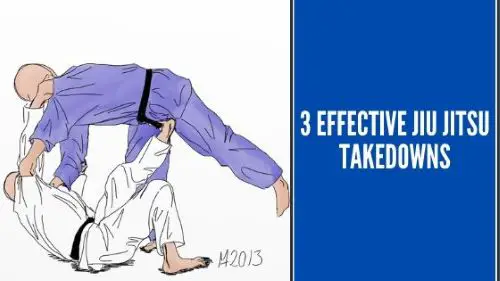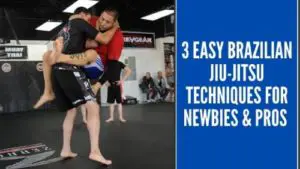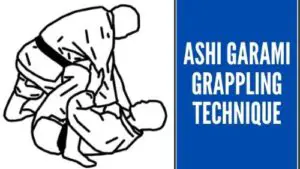In most martial arts taking someone to the ground usually happens so that the fight can be finished by immobilizing or killing the opponent. In modern fight situations such as the MMA scenario, it is that immobilization and submission that is sought. So the question then becomes what is the best way to get your opponent to the ground to finish the fight. We going over the most effective Jiu Jitsu takedowns to use.
Jujitsu is an art form that contains many ways to take someone down, but the real key to any martial art is not necessarily the techniques it employs, it is the person employing the technique.
The very ‘best’ jujitsu technique executed by an incompetent opponent is unlikely to succeed whereas the most obvious ‘training exercise technique’ executed by someone of skill and flare may well.
Given this understanding, I have detailed below some of my favorite throws and manipulations, these work for me because these are takedowns that I know and execute smoothly.
They may or may not work for you, they may seem silly or unlikely to work, but they do work for me.
One last point to keep in mind, these jujitsu style involves the ‘defense against an attack’ sort of response, rather than the more common grappling and throwing seen in other jujitsu styles.
If you want to learn more about Brazillian Jiu Jutsu’s history and general overview in this article.
The Classic ‘Hip Throw’
The attacker starts in a left foot forward stance, with the guard up and executes a reverse punch to the face.
The defender also in a left foot forward stance starts with a left ‘S’ block and pulls the attacker forward and downwards to unbalance the attacker and set up the throw, whilst simultaneously performing a right punch to the solar plexus as a counter to the initial attack.
In one smooth movement, the defender now steps forward on the left foot and pivots anti-clockwise, whilst pulling the attackers right arm close into their body and tucking the hand into your left armpit, as the pivoting motion continues the defender slips their right arm around the waist of the attacker using a top fist to strike into the attackers right kidney.
At this point, the defender should have both feet parallel and inside the stance of the attacker. Bending the knees, drive your left hip towards the attackers’ groin and straighten your legs then as the attackers’ feet start to leave the floor to pull down with your left hand and straighten your posture to roll the attacker over your back.
At this point, the defender hits the ground!
What happens after this is dependent upon how much damage / how quickly a submission is needed. In a street situation, it is likely that the attacker isn’t practiced in breakfalls.
This means that the attackers head probably hit the ground so there may not be many fights left in them.
When sparing, the classic hip throw is widely used and often poorly executed, practice using a compliant partner, then get your partner to become slowly less compliant until they are actively resisting. With luck and a good instructor, the technique will develop.
The ‘Knee wheel’
Once again both the attacker and defender start in a left foot forward, guard up stance. The attacker executes a reverse punch to the face.
The knee wheel takes timing, as the defender you need to be able to ‘see’ the punch coming and start to react as the attacker starts to move.
Slide forward, keeping the left fighting stance and use a left bar or knife hand block into the attacker’s bicep, this is where the pre-cognition helps! The block helps to stop the punch before it happens, it also starts the unbalancing process of the attacker.
At this point, the defender’s left foot should be somewhere near the attacker’s right foot and on the outside of their stance, as you slide forward into the block your right arm strikes the attacker.
How your right arm strikes the attacker here depends upon the situation, in training and sparing I recommend a bicep strike to the attacker’s chest.
A straight arm strike across the chest, this starts the attacker bending backward. Street variations involve elbows, U palms, and throat strikes!
As you strike the attacker with your right arm, slide the attacker’s right hand into your left armpit and clamp down on it, next transfer your weight to your left leg and execute a right pushing strike to the back of the attacker’s right knee with your right foot (think right side kick).
As you strike with the foot keep the pressure on the attacker’s chest with your right arm, the attacker will fall over backward and land at your feet.
As with the Hip throw, what happens now is dependent upon what the defender is trying to achieve.
The ‘Lapel throw’
Before I describe this throw, please note that this throw requires that the attacker is wearing a jacket or shirt that is relatively strong. There is a ‘tee-shirt’ variation of this throw but it is a bit unorthodox.
As with the other throws both attacker and defender start in the left foot forward fighting stance. The attacker throws a reverse punch to the face.
The defender blocks with a left inside block and immediately responds with a right downward bottom fist strike to the attacker’s left clavicle.
If executed correctly this will shatter the bone and immobilize the attacker’s left arm, so I would suggest striking the attacker left pectoral instead.
After the strike, grab a handful of the attacker’s gi, now step in towards the attacker as if executing the hip throw described earlier, except instead of putting your arm around the attacker’s waist keep hold of the attacker’s gi and tuck your right elbow/forearm into the attacker’s right armpit.
As with the hip throw, bend your knees, drive your left hip into the attacker’s groin and lift, then straighten your back and the attacker will fall to the ground over your back.
Unlike the hip throw, as the attacker falls you are able to use your right hand (still full of the attacker’s gi) to drive the attacker to the ground. This makes for a faster fall and a more surprised attacker.
Using this technique whilst sparing is difficult as it requires a compliant partner or a skilled defender, but when it works on a partner that wasn’t expecting it, the lapel throw is both spectacular and noisy.
Martial arts are taught in classes for a reason. The watchful eye of an experienced instructor can spot and correct bad habits before they develop, if you want to try these techniques please do so in an organized class. It will make a huge difference in the quality of your technique.
Did you like these Jiu Jitsu takedowns’ quick overview? Let us know by giving us a share.







